Vietnam, a country with a rich history and culture, is a convergence of many religions and beliefs. Therefore, throughout this S-shaped land, you can find countless sacred spiritual places where people come to pray, seek peace, and connect with the spiritual world. This article will introduce you to must-visit destinations where you can experience the cultural, historical, and profound spiritual beauty of Vietnam.
Ba Chua Xu Temple, Sam Mountain, Chau Doc – An Giang
Speaking of spiritual tourism in the South, one cannot ignore Ba Chua Xu Temple at Sam Mountain in Chau Doc, An Giang. This temple is not only a famous tourist destination but also a long-standing historical relic, attracting millions of visitors each year, especially during festivals.
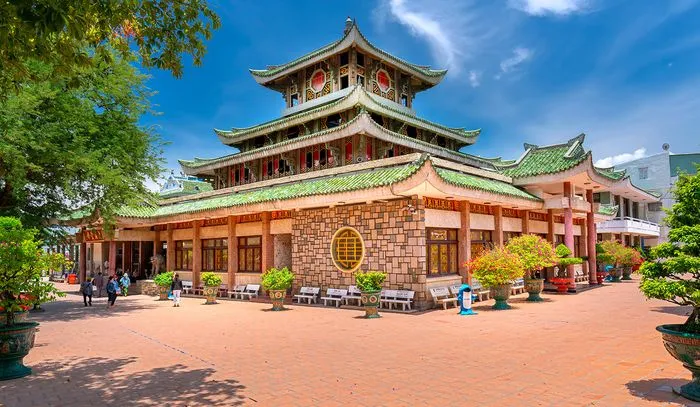
The legend of Ba Chua Xu Temple is also very special. It is said that about 200 years ago, local people discovered a statue of Ba (Lady) on the top of Sam Mountain and wanted to bring it down to the mountain to worship. However, despite mobilizing many strong young men, they still could not move the statue. Later, according to the instructions of a female shaman, nine virgin girls were able to carry the statue down the mountain. At the foot of the mountain, the statue suddenly became very heavy and could not be moved further. People believed that this was Ba’s will, so they built a temple to worship her right there.
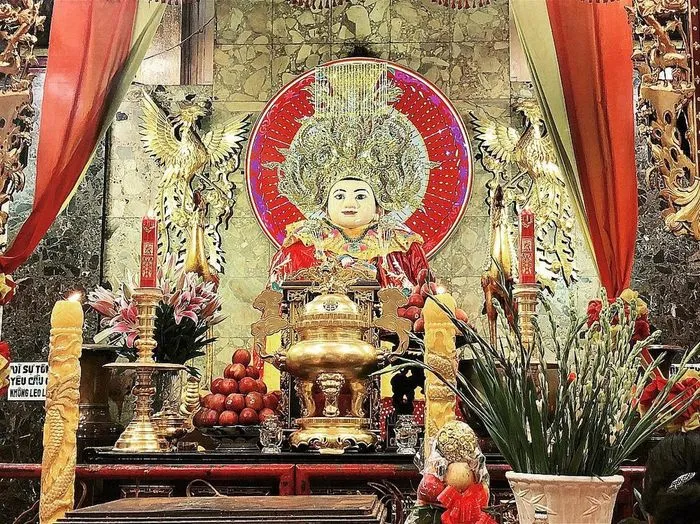
The architecture of Ba Chua Xu Temple has a unique “Quoc” (國) shape, resembling a blooming lotus flower. Seen from afar, the temple appears in elegant colors, roofed with jade-green tiles. The corners of the roof are high and sharp, creating a solid feeling. Inside, the architecture has an Indian style, with intricate carvings. If you have the opportunity to travel to An Giang, do not forget to visit Ba Chua Xu Temple to pray for peace and luck for your family and loved ones.
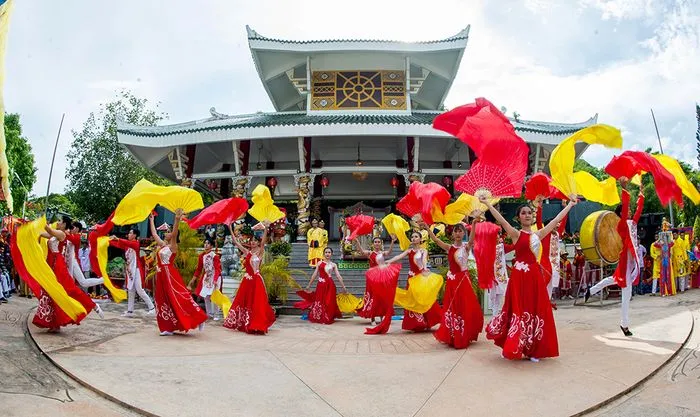
Thien Mu Pagoda, Hue – Spiritual Symbol of the Ancient Capital
Thien Mu Pagoda, located by the poetic Perfume River, is one of the most ancient and famous pagodas in Hue. Not only a symbol of Hue, Thien Mu Pagoda is also a spiritual destination attracting many Buddhists and tourists from all over.
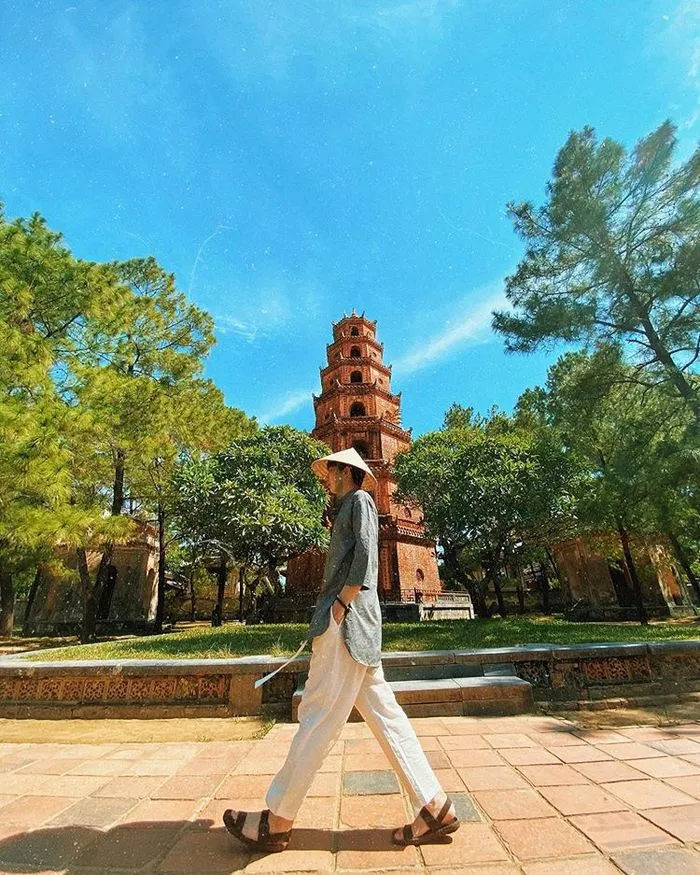
Over 400 years of history, Thien Mu Pagoda has been restored many times, but still retains its rustic, graceful architecture, harmonizing with the surrounding natural landscape. From above, the pagoda looks like a giant turtle looking at its reflection in the Perfume River. Phuoc Duyen Tower, a symbol of the pagoda, is 7 stories high, where Buddha statues are worshiped and has stairs leading to the top floor, where a gold Buddha statue is worshiped.
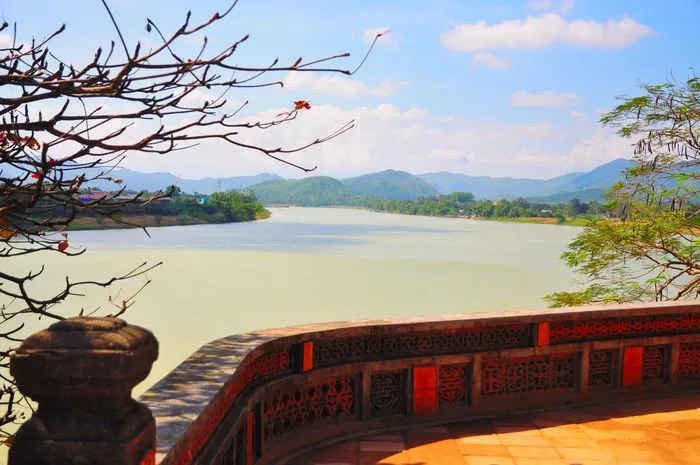
In addition to Phuoc Duyen Tower, Thien Mu Pagoda also has many other beautiful architectural works such as Dai Hung Hall, Dia Tang Hall, and Quan Am Hall. Visiting Hue without visiting Thien Mu Pagoda means you have missed an important part of the travel experience in the ancient capital.
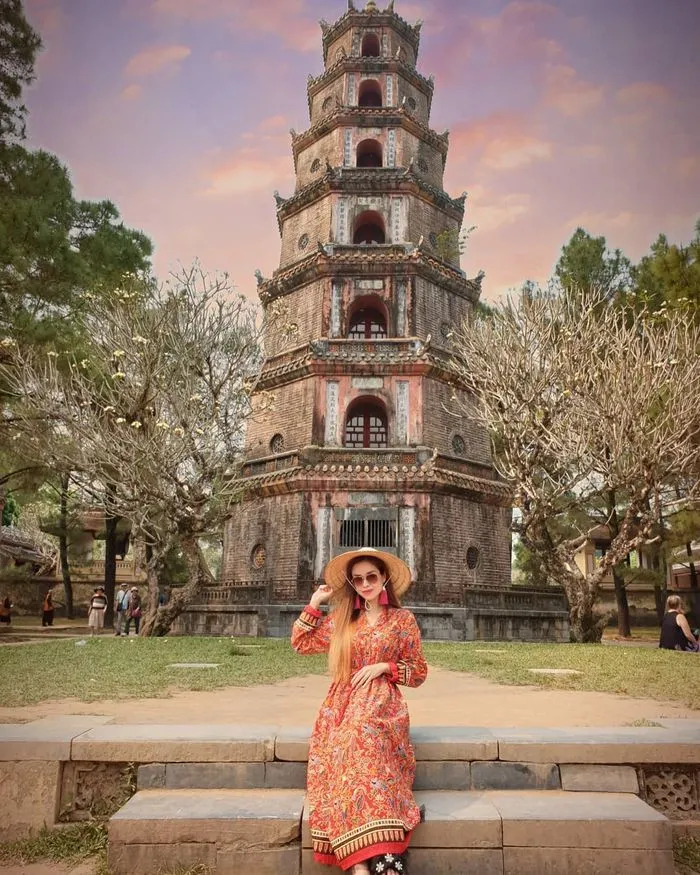
Linh Ung Pagoda, Da Nang – Where Spirituality and Nature Intertwine
Da Nang is famous for its three Linh Ung Pagodas, each with its own unique beauty. Among them, Linh Ung Pagoda Bai But on Son Tra Peninsula is the most famous, with the tallest statue of the Goddess of Mercy in Vietnam.
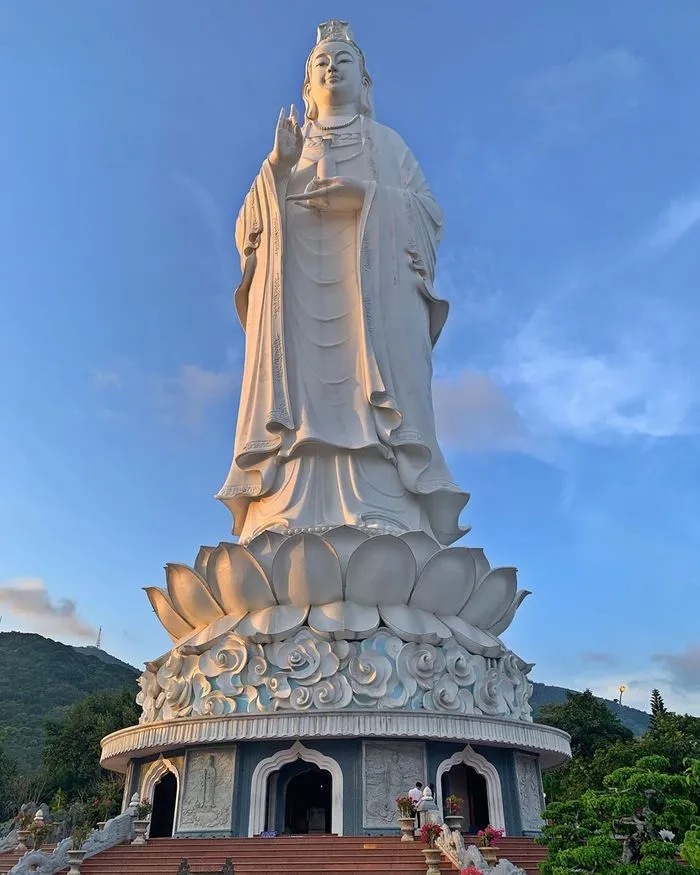
Linh Ung Pagoda Bai But has a large area, built in a combination of modern and traditional architecture, creating a spacious space for visitors to comfortably sightsee. Legend has it that during the reign of King Minh Mang, people discovered a Buddha statue on the golden sand, so they built a shrine to worship it. Since then, the sea area here has become peaceful, and fishermen have prospered. They called this place Bai But, meaning the Buddha’s realm in the mortal world.
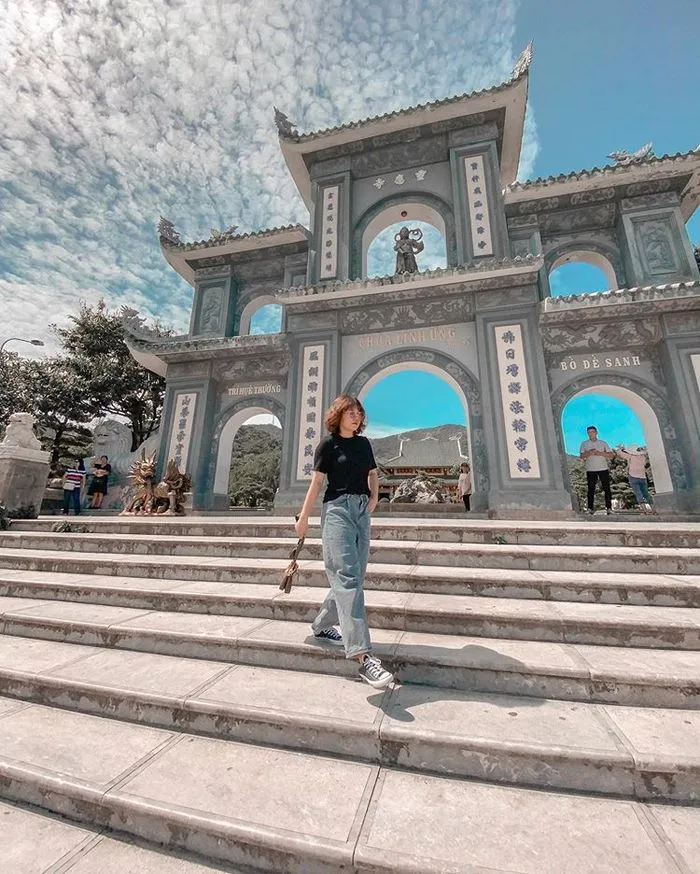
The ideal time to visit Linh Ung Pagoda is from March to September, when Da Nang’s weather is dry and the sky is clear, making it easy to admire the panoramic view of the sea and the city.
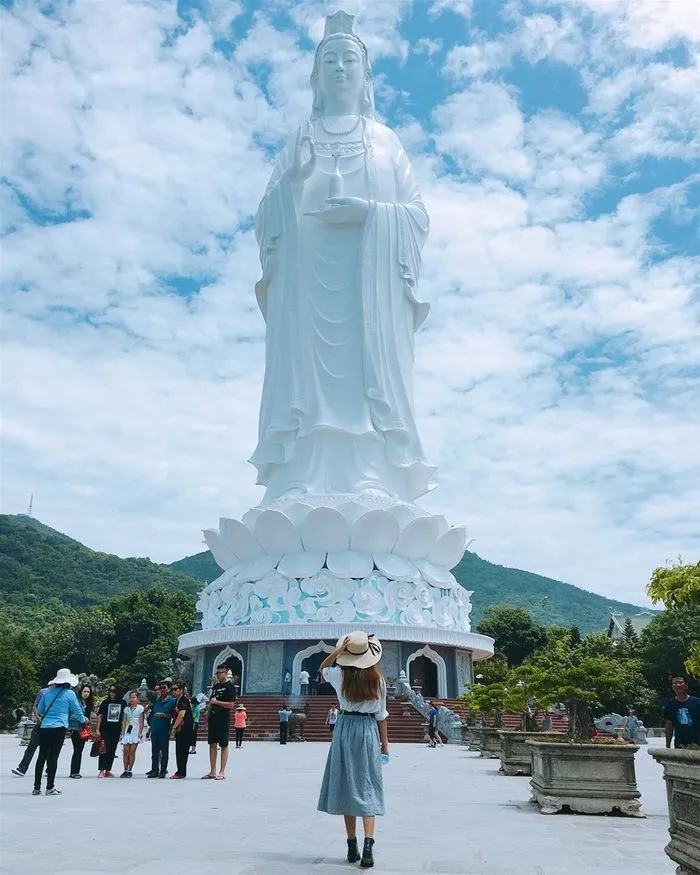
Linh An Pagoda, Da Lat – Harmony Between Spirituality and Majesty
Linh An Pagoda, the second largest pagoda in Da Lat after Truc Lam Zen Monastery, is a spiritual destination attracting many tourists due to its prime location and beautiful scenery. Located in Nam Ban town, Lam Ha district, Da Lat, near Elephant Waterfall, Linh An Pagoda offers visitors a space where solemnity, tranquility, and the majestic, pristine beauty of nature intertwine.
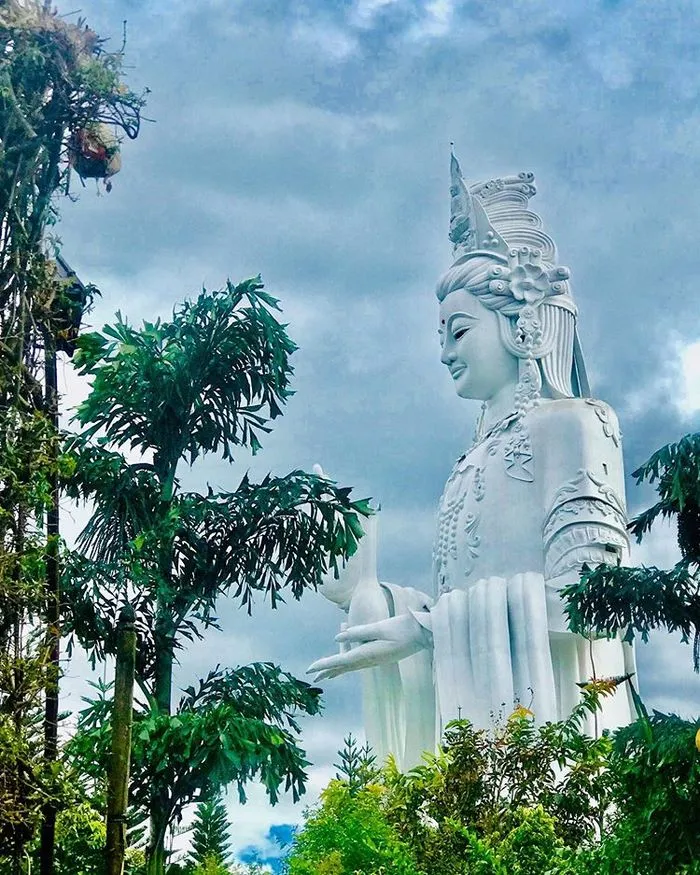
The highlight of Linh An Pagoda is the 54m-high statue of the Goddess of Mercy, meticulously and beautifully carved. Inside the pagoda, there are also 500 Bodhisattva statues of Quan Am, 3m high, cast identically. Surrounding the pagoda are green hills, creating a peaceful and tranquil setting.
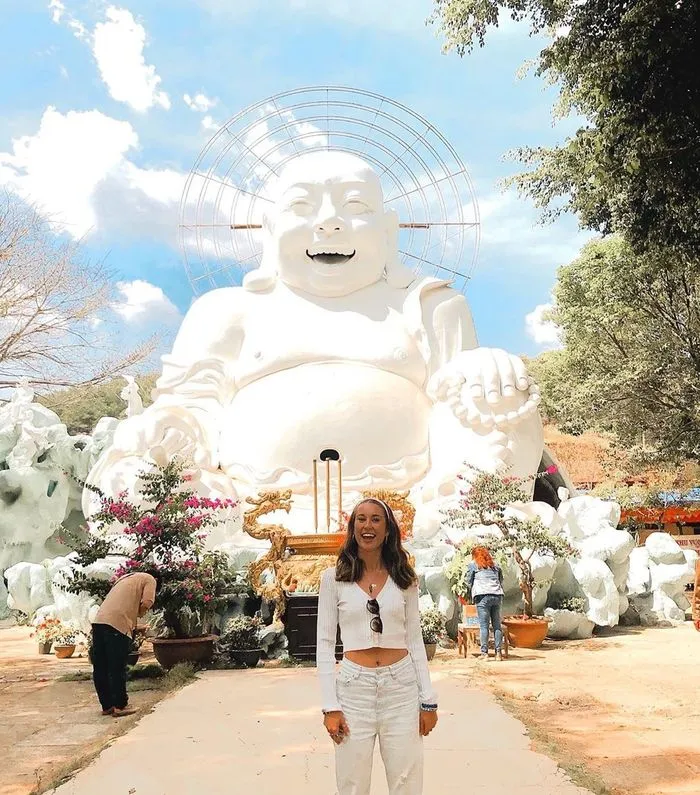
Vinh Trang Pagoda, Tien Giang – Unique Architecture in the Mekong Delta
Vinh Trang Pagoda, located in My Tho, Tien Giang, is one of the most famous spiritual tourist destinations in the Mekong Delta. This pagoda often appears in tours exploring the Mekong Delta’s orchards.

With an area of 14,000 m2, Vinh Trang Pagoda impresses with its unique architecture, a cultural intersection of the Kinh, Hoa, and Khmer ethnic groups. The pagoda preserves 60 gilded wooden Buddha statues from the 20th century and 3 ancient bronze Buddha statues with intricate carvings. In addition, the pagoda also has 3 giant Buddha statues: Amitabha Buddha, Reclining Buddha, and Maitreya Buddha.

Vinh Trang Pagoda is one of the pagodas most visited and checked-in by domestic and foreign tourists when traveling to the Mekong Delta.
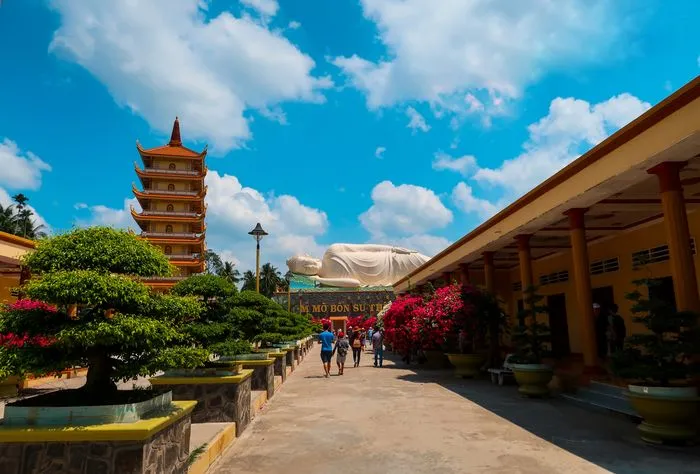
Bai Dinh Pagoda, Ninh Binh – Top Spiritual Landmark
Bai Dinh Pagoda, located in the Bai Dinh – Trang An eco-tourism complex, Ninh Binh, is a familiar pilgrimage point for Buddhists every Lunar New Year. With a history of over 1000 years, Bai Dinh Pagoda is one of the most famous spiritual tourist destinations in the North.
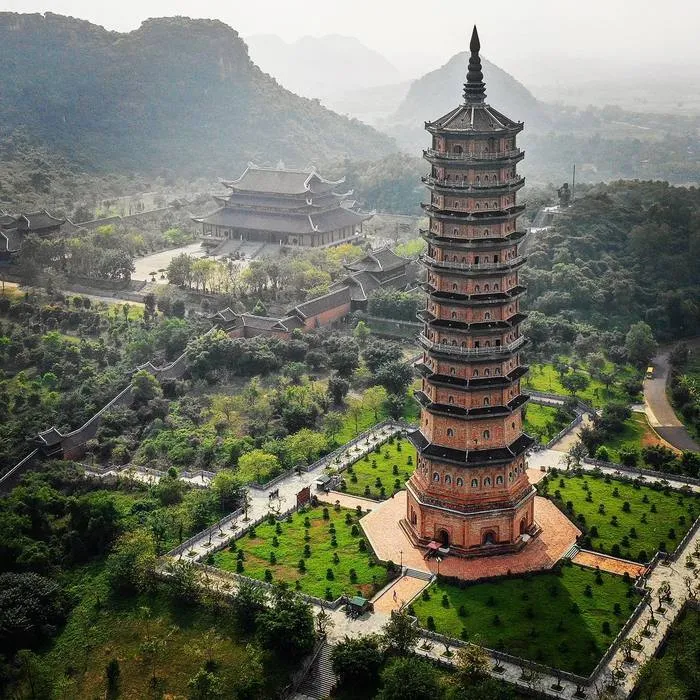
With an area of up to 539 hectares, Bai Dinh Pagoda welcomes tens of thousands of pilgrims each year. Prominent attractions here include Sang Cave – Toi Cave, Nguyen Temple, Ngoc Well, La Han Corridor, the largest Shakyamuni Buddha statue in Asia, giant bronze bell, etc.
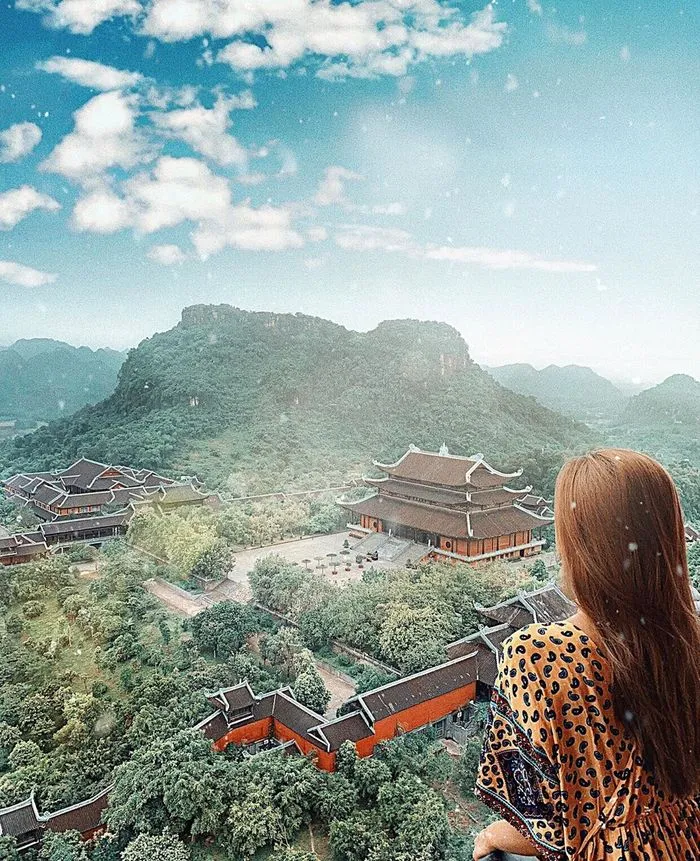
Bai Dinh Pagoda gives visitors a sense of solemnity, purity, and the grandeur of architectural works. If you intend to visit Bai Dinh Pagoda, come during the Lunar New Year, when the weather is warm and you can combine it with spring travel to the ancient capital of Hoa Lu.
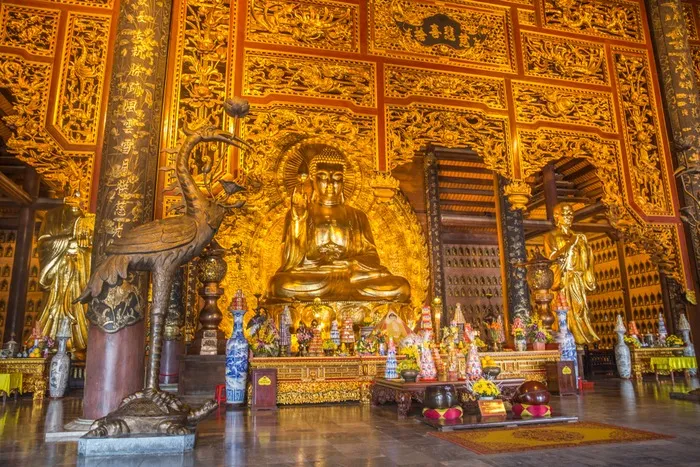
Yen Tu Pagoda, Quang Ninh – Ancestral Land of Vietnamese Buddhism
Yen Tu Pagoda, located in Quang Ninh, is known as the ancestral land of Vietnamese Buddhism. Every year, the pagoda attracts many Buddhists from all over to visit and worship in the spring.
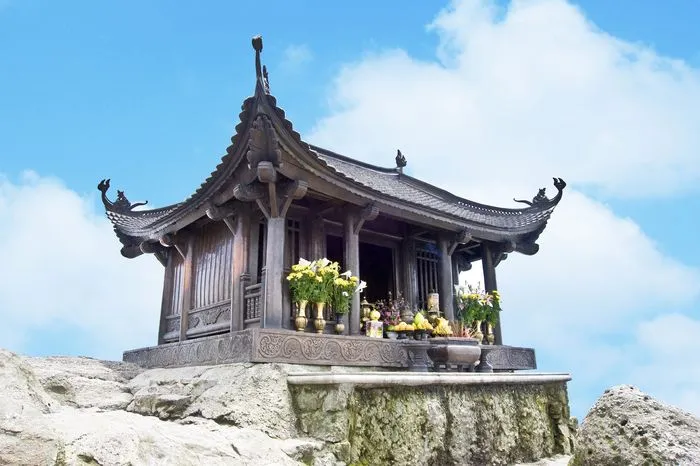
According to folk beliefs, if you visit Yen Tu Pagoda continuously for three years, you will encounter many good things in life. The scenery of the pagoda is extremely solemn and pure. The roads leading to the pagoda are located amidst green, overlapping mountains, which can captivate anyone.
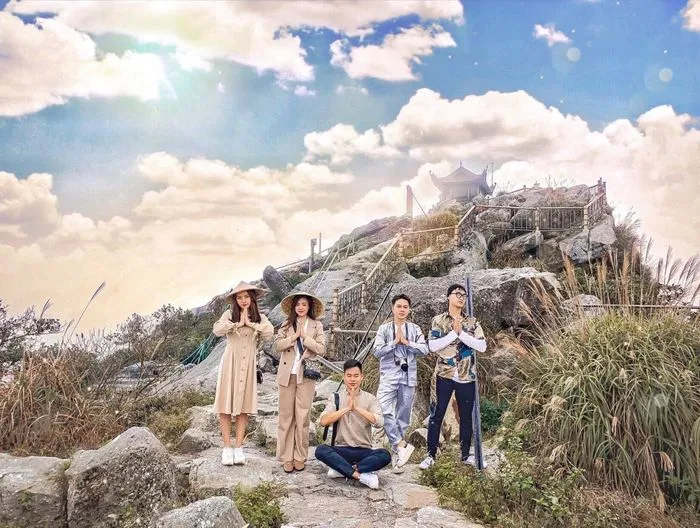
Notable attractions at Yen Tu Pagoda include Trinh Pagoda, Truc Lam Yen Tu Zen Monastery, Hue Quang Tower, Hoa Yen Pagoda, Bao Sai Pagoda, An Ky Sinh, statue of King-Monk Tran Nhan Tong, Dong Pagoda, etc.
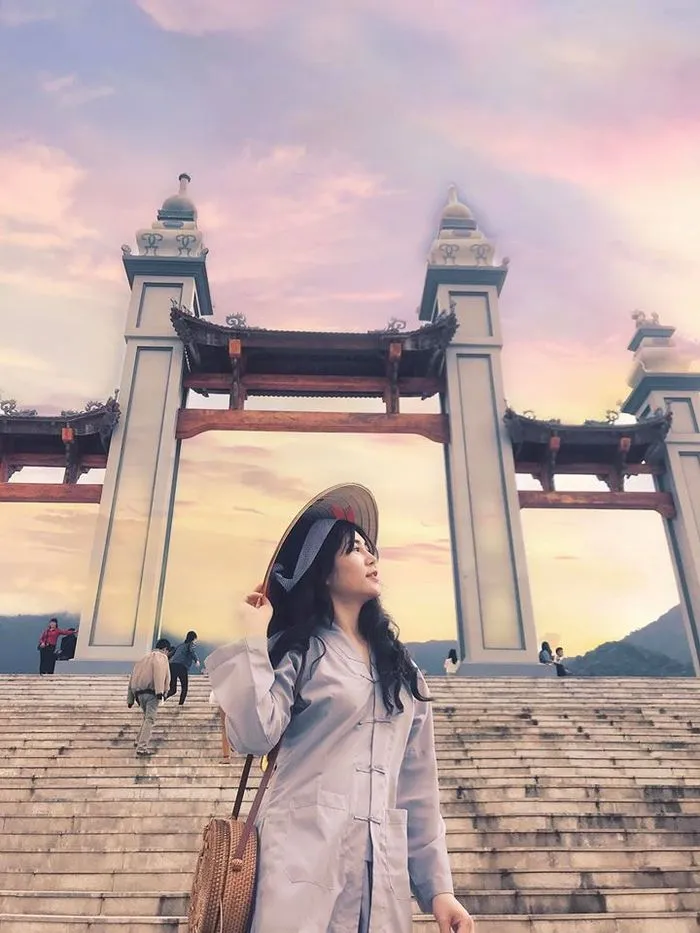
Tran Quoc Pagoda, Hanoi – Most Beautiful Pagoda in the World
Tran Quoc Pagoda in Hanoi is recognized as one of the most beautiful pagodas in the world by the prestigious Thrillist page. With a history of 1500 years, Tran Quoc Pagoda evokes values not only of spirituality but also of history and architecture.
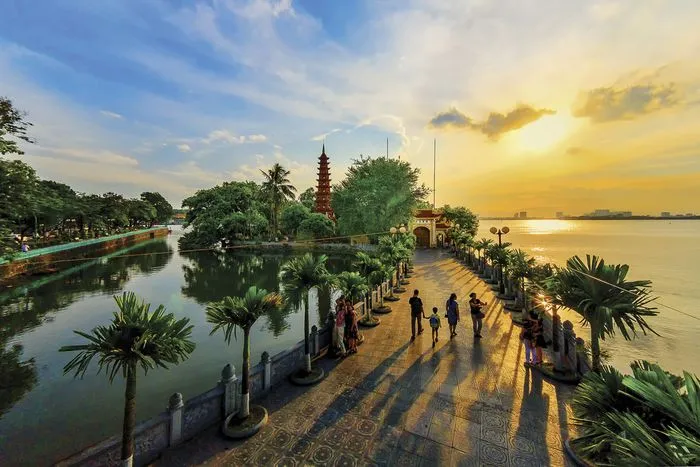
Tran Quoc Pagoda used to be the Buddhist center during the Ly – Tran dynasties of Thang Long capital. Kings and mandarins often visited and worshiped at the pagoda on holidays and Tet. The pagoda has ancient, pure, and serene architecture.
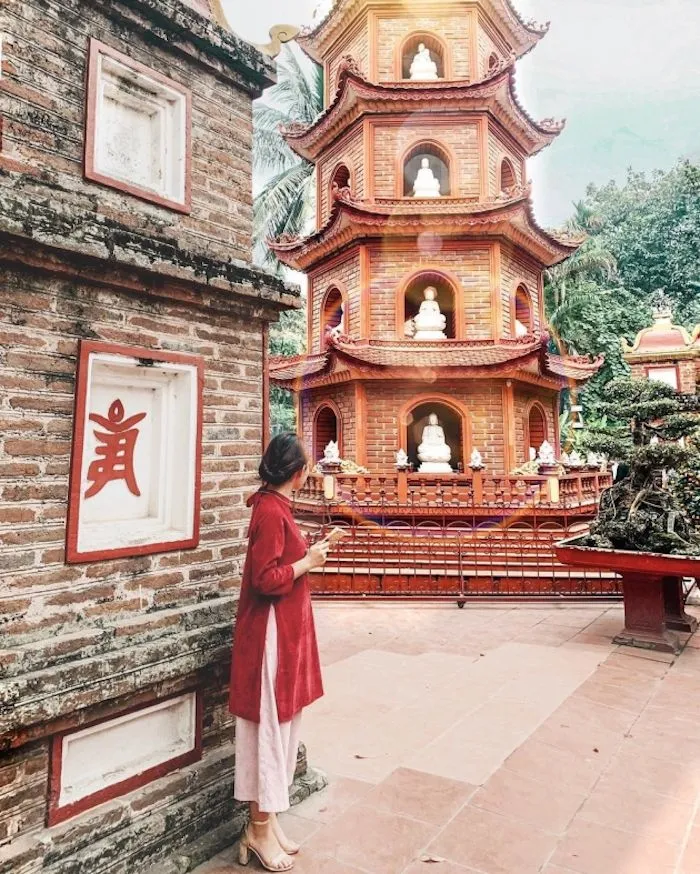
The pagoda preserves many ancient Buddha statues of high artistic value, typically the statue of Shakyamuni Buddha entering Nirvana made of wood, lacquered and gilded.
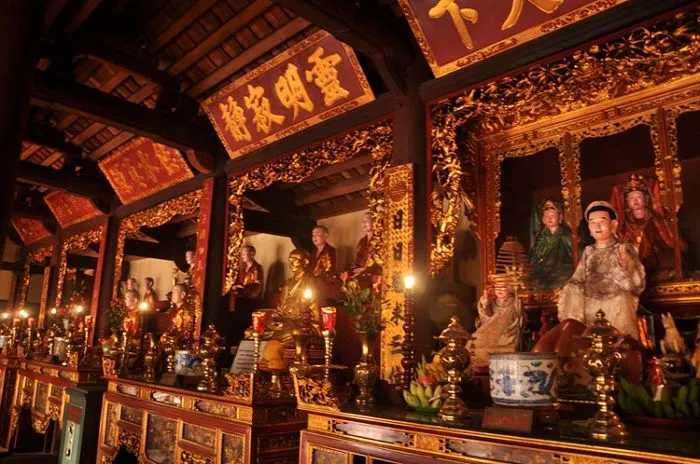
Ba Den Mountain Tourist Area, Tay Ninh – Spiritual Symbol of Southeast Vietnam
Ba Den Mountain, the highest mountain in Southeast Vietnam, is a symbol of Tay Ninh, not only showing natural beauty but also religious beauty. This place is associated with the legend of Linh Son Thanh Mau, about Lady Thien Huong who sacrificed herself to keep her loyalty and was ordained as a goddess governing the sacred mountain.
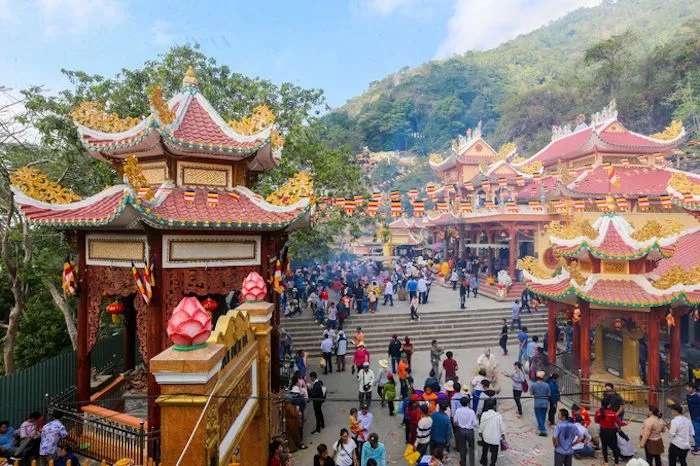
With beautiful scenery and sacred Ba Den Pagoda, Ba Den Mountain becomes a favorite destination for spring travel, sightseeing, and pagoda visits at the beginning of the year.
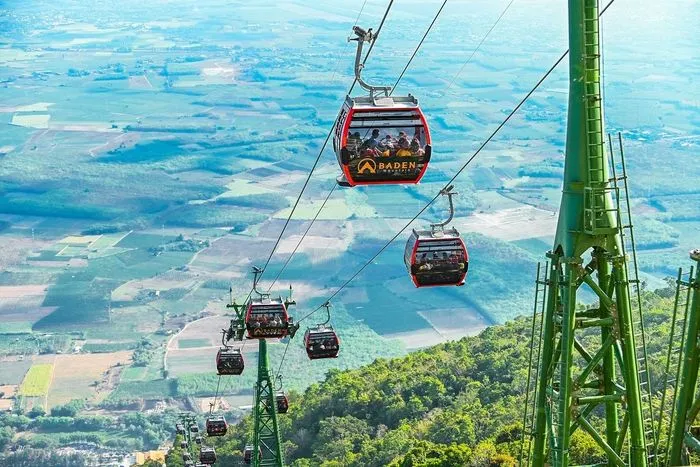
Buu Long Pagoda, Ho Chi Minh City – Thai Architecture in Saigon
Buu Long Pagoda, located in District 9, Ho Chi Minh City, is also known as the Thai Pagoda because of its unique Thai architecture. The pagoda’s scenery is magnificent but still dignified and serene. Every detail of the pagoda, from columns, doors to lamps, is elaborately and exquisitely crafted.
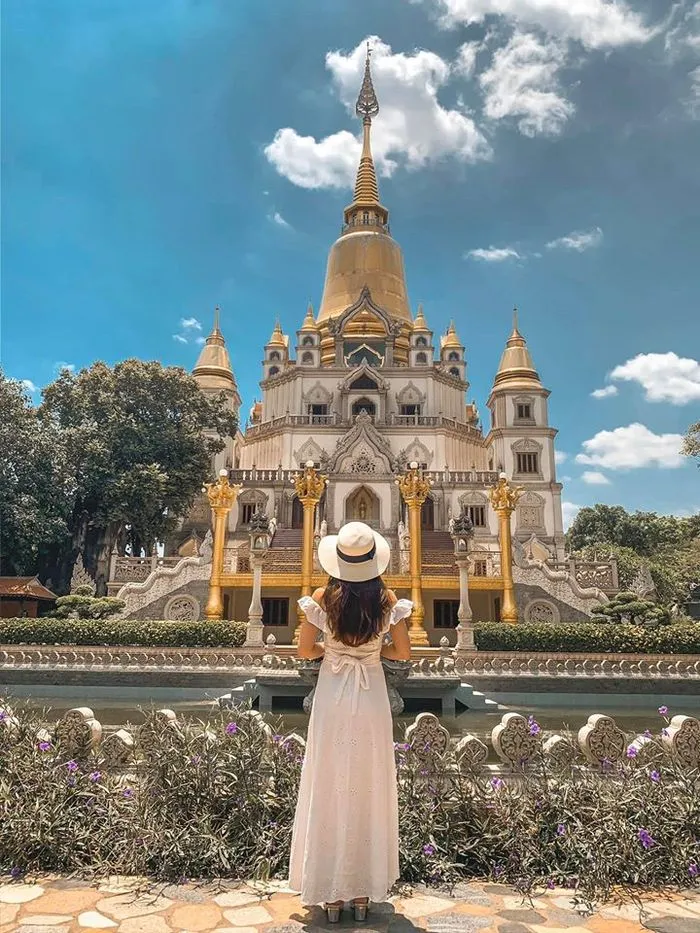
Buu Long Pagoda is always being restored and embellished to become more complete, creating favorable conditions for the cultivation of monks and pilgrimages of Buddhists.

Notes When Visiting Spiritual Destinations
To make your trip to spiritual destinations complete and meaningful, you should note the following:
- Dress code: Choose modest, polite clothes, suitable for the solemn space of religious sites.
- Behavior: Maintain a respectful and reverent attitude, avoid being noisy or disruptive.
- Speech: Use gentle, polite language, avoid swearing or cursing.
- Consciousness: Maintain general hygiene, do not litter indiscriminately, and do not infringe on artifacts in the visiting area.
- Security: Keep personal belongings carefully, avoid pickpocketing or theft.
Spiritual tourism is not only a journey to explore sacred places, but also an opportunity to return to yourself, seek peace in your soul, and connect with the traditional cultural values of the nation. Hopefully, with the above suggestions, you will have a truly meaningful and memorable trip.